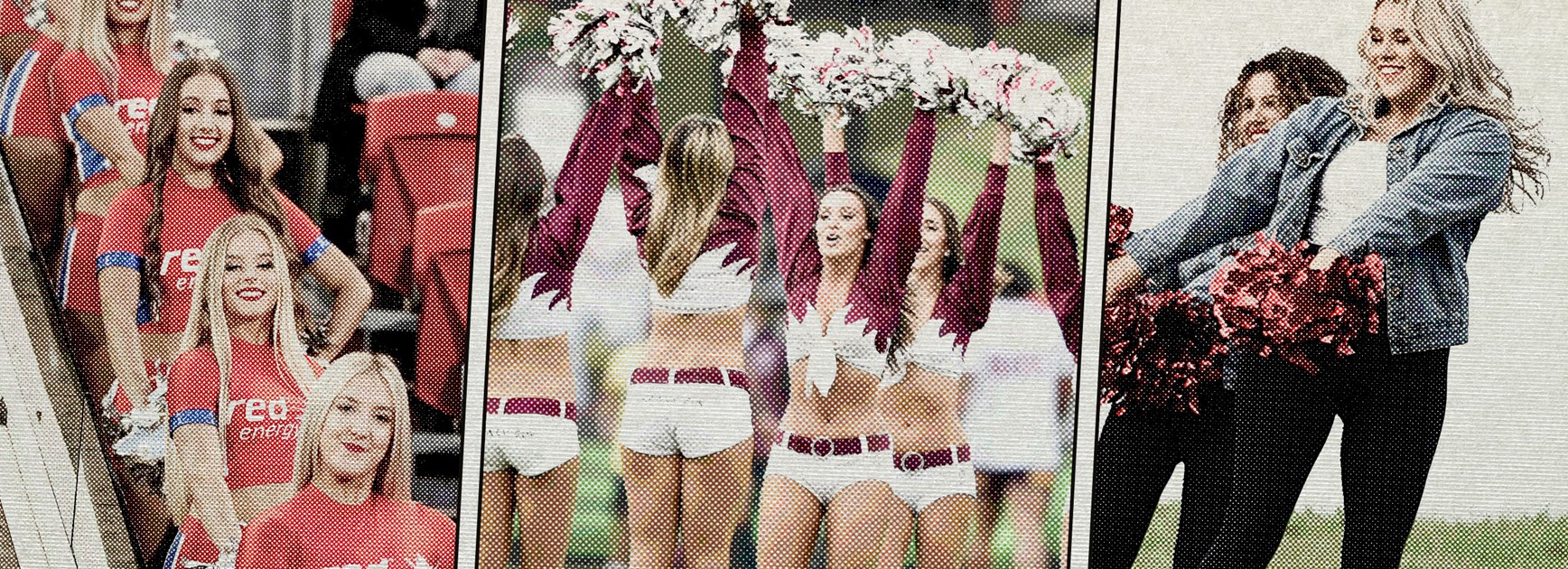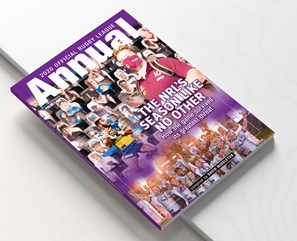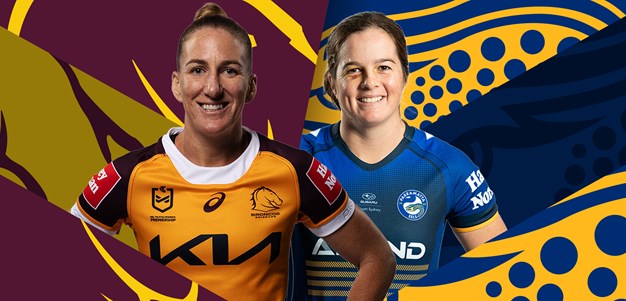
The phasing out of NRL cheerleaders comes at a time when women have never been more welcome in the game.
The rise of women's rugby league - culminating in the NRLW competition and standalone State of Origin matches - has added a rich new chapter to the sport in recent years.
Employment opportunities now exist in areas where they once didn't and women have a growing voice ranging from weekend junior footy to the ARL Commission.
The same cannot be said about cheerleaders - a topic that will never be as black-and-white as many think it is.
Are the decisions to phase out cheerleaders a result of the behaviour of some of those who watch them? Or has the time come when they simply no longer fit in with the game's values?
They are complex questions.
Episode 1 - Footy returns for 2021
It is certain the rationale behind the decisions made by the likes of South Sydney, Melbourne, Canberra, and now Parramatta, has never been to sideline women from club activities.
But the question as to why such decisions have been made is worth asking.
Let me repeat, this is no black-and-white issue.
Growing up, the cheerleaders at my club - Parramatta - would be present before the game taking photos with fans before doing their jobs during the match. You'd see them after matches as well.
Through my teenage years, I thought I knew what cheerleading was about.
I questioned the role of cheerleading in the game, felt mildly uncomfortable when I heard men whistling and cat-calling towards these women and maybe also felt some jealousy towards them because I would never be as pretty, thin or flexible as they were.
I held these views for many years and wondered "what is the point of cheerleaders?"
How the best players exploit eyes-up footy
Then I had the opportunity to meet two talented women: Darcie McDonald and Natalie Sinclair.
McDonald is a journalist and a former Canterbury Bulldogs cheerleader and Sinclair is a lawyer and a former cheerleader for the Penrith Panthers.
These women changed my mind.
As a feminist and a woman who is passionate about women being involved in rugby league in whatever capacity they like, I finally recognised that this is exactly what cheerleaders were doing.
These women are talented dancers who love rugby league and want to be part of something. This is their way of supporting their club.
Opportunities for women with these types of professional dancing credentials are limited; cheerleading is one of the only spaces where women can pursue their craft and be paid for it.
Such opportunities should be encouraged as should women pursuing what they are interested in.
It is not the responsibility of cheerleaders to control the behaviour of those who watch them.
Everybody’s heading to Magic Round
The cat-calling, whistling and sexist comments are not their fault. They are simply doing their job and should not be prevented from doing so because of the behaviour of others.
The reality is cheerleading appears to be a dying art.
The Eels have become the most recent club to make a decision to take cheerleaders out of their match-day experience.
That decision elicited strong reactions and it felt like the position you took indicated whether you supported the role of women in the game or you didn’t.
I support the role of women to participate in rugby league in any way they like. Our game is for everyone and I have always had the strong view that there is a role for everyone.
Supporting a club is all about feeling part of something and if women want to be part of a club by participating in the cheerleading squad, that should be celebrated.
In saying that, clubs are entitled to make decisions about their match-day experience.
Rugby league is a game built on tradition. Many of us feel nostalgic when we recall the past; suburban grounds, sitting on the hill with a pie, uncomfortable wooden benches, all three grades and, of course, cheerleaders.
Ready to play? Join our league of strong and confident kids
It’s important to preserve tradition but also, I want our clubs to be looking to the future.
Drive just about anywhere on the weekend in winter and you’ll see young women participating in all forms of the game; tag, tackle and touch.
Whilst the Telstra Women's Premiership only has four teams, this will not be the case forever.
Clubs like the Wests Tigers, Eels and Knights have already indicated either a desire to field a team or have demonstrated a real commitment to women’s footy.
If a move away from cheerleaders signifies greater investment by clubs in women’s rugby league and grassroots, then I support this.
I also support the increased visibility of women’s rugby league on game day. We have seen a move toward this in recent seasons with the Touch Football Premiership taking place before games.
Whilst I’m disappointed for the women who have lost employment because of a decision around match day experiences, I recognise that clubs are in a position where tough decisions have to be made.
But it does present an opportunity for a club like the Eels to think about their game day experience with an eye to the future.
Fingers crossed that future includes an NRLW team for new traditions for women to become a part of.
The views in this article do not necessarily express the opinions of the NRL, ARL Commission, NRL clubs or state associations.



